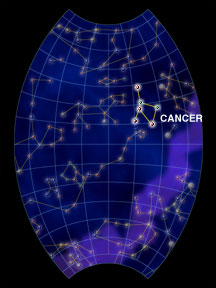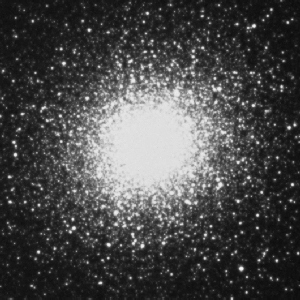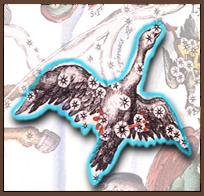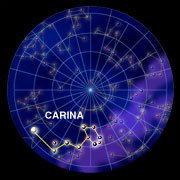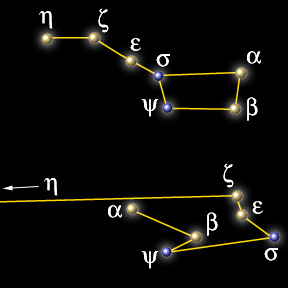Click on image for full size
Windows to the Universe original image
Related links:
Cancer
Cancer, the Crab, is a member of the Zodiac, a group of constellations that the Sun travels through each year. Cancer spends half of the year in the sky. It first rises in December and is visible through June. Although the Crab is one of the more famous constellations, it is mostly made of dim stars.
Fortunately, Cancer is surrounded by much brighter figures, like Gemini and Leo. If you use your imagination, a figure that looks like a crab appears. Looking at the picture, one can see a body with two "claws" coming out of it. The head of the crab contains two stars named Asellus Borealis and Asellus Australis, whose names mean Northern and Southern Ass. These stars were believed to be the two asses that Dionysus and Silenus rode on during the battle against the Titans. The loud noises of the animals scared the Titans, and so the gods won the battle that day.
The constellation itself came from Greek myth. In the story of Heracles and the Twelve Labors, the warrior had a great battle with the monster Hydra. Hera sent a giant crab to hinder Heracles. However, its grasp did little to stop the hero, who simply crushed the crab beneath his foot. Hera put the crab in the sky to honor its bravery.
Right next to the head is a star cluster known as Praesepe, or the Beehive. To the naked eye, it looks like a fuzzy cloud. Some civilizations believed it was an opening for souls to come down from Heaven. Galileo later discovered that it was really a cluster of stars. It was later named the Beehive because astronomers think the cluster looks like a swarm of bees.
There is a dim galaxy located in the southeast corner of the constellation called NGC 2275.


